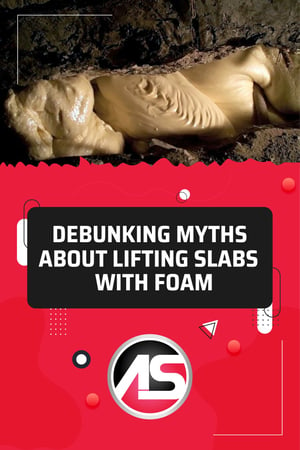
 When parts of a concrete surface sink due to erosion and poor compaction, the resulting trip hazard can be dangerous. If left unrepaired, liability and safety issues linger. Although concrete is tough and durable, unstable soil can cause it to crack and sink. Fortunately, a reliable solution for lifting concrete has been developed and proven over the past few decades. High-strength expansive polyurethane foam is injected underneath the slab to bring it back to level. This method has been used in a wide variety of commercial and residential applications with long-lasting results.
When parts of a concrete surface sink due to erosion and poor compaction, the resulting trip hazard can be dangerous. If left unrepaired, liability and safety issues linger. Although concrete is tough and durable, unstable soil can cause it to crack and sink. Fortunately, a reliable solution for lifting concrete has been developed and proven over the past few decades. High-strength expansive polyurethane foam is injected underneath the slab to bring it back to level. This method has been used in a wide variety of commercial and residential applications with long-lasting results.
Despite consistently reliable results, some myths about polyurethane slab lifting have cropped up over the years.
Myth #1: Polyurethane Foam is a Temporary Fix
People who assume that polyurethane slab lifting is a temporary fix typically have a general lack of knowledge, understanding, and experience with the process. Common misperceptions supporting this myth include:
- The incorrect assumption that foam will be susceptible to moisture and degrade under the concrete.
- The incorrect assumption that the process typically leaves large voids underneath the slab, leading to resettlement.
Water does not cause lifting foams to degrade underneath the slab. In addition, a factory-trained contractor will not leave gaps underneath the slab that would lead to resettlement.
Myth #2: Polyurethane Foam Cannot Support Heavy Loads
Another common misconception is that polyurethane foam is weak and does not have the load-bearing capacity to support slabs with heavy traffic or large structures.
Common misperceptions supporting this myth include:
- The incorrect assumption that lifting foam is the same stuff used by the insulation guys.
- The incorrect assumption that because it expands easily, it must collapse easily.
- The incorrect assumption that the expansion rate is uncontrollable and leads to unpredictable results.
All lifting and stabilization polyurethane foams formulated and manufactured by Alchemy-Spetec are designed specifically for Geotechnical applications. Once cured, Alchemy-Spetec lifting foams are incredibly strong and durable. Easy expansion does not equal easy collapse. Factory-trained contractors can control the final lift level of a slab to within 1/8th of an inch.
Myth #3: Polyurethane Foam is too Expensive
When faced with the dilemma of a sunken slab, you have three options aside from polyurethane slab lifting:
- Doing Nothing: If you do nothing, the problem will grow. The longer you wait, the more expensive the repair.
- Replacing the Slab: This process will take several days, is often messy, and is typically more expensive than lifting with polyurethane.
- Lifting with Cement Grout: This procedure (known as “mudjacking”) requires heavy equipment, large drill holes, and the use of weighty cement grout which often sinks over time. When the cement grout sinks over time, you have to get it lifted again. Eventually, even this process becomes more expensive.


